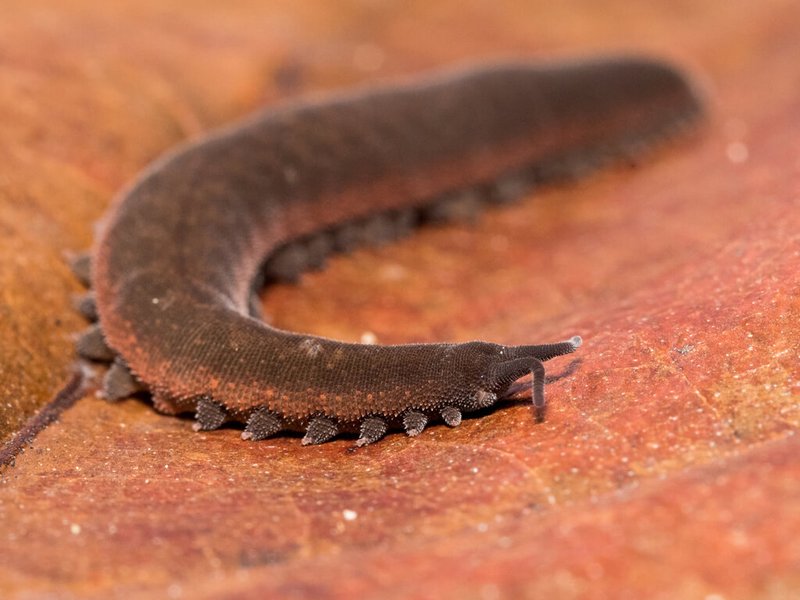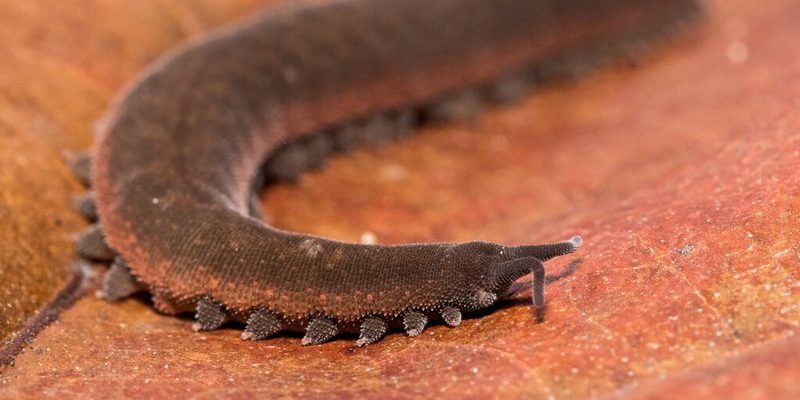
Now, picture this: you’re sitting in a café, and a friend asks you how velvet worms and spiders tackle their meals. You might be surprised to learn that both creatures, though vastly different in appearance and lifestyle, have developed a variety of strategies to snag dinner. Let’s dive into the nitty-gritty of these two unique hunters, their methods, and what makes their hunting behaviors so captivating.
What Are Velvet Worms?
Before we get into the hunting habits, let’s take a moment to understand what velvet worms actually are. Velvet worms are soft-bodied, segmented invertebrates that live in humid environments, often in leaf litter or under rocks. They come primarily in vibrant hues, showcasing colors like blue, green, or even pink. Unlike their arachnid cousins, they have a unique, almost prehistoric charm to them.
These creatures can grow to about 5 to 15 centimeters long, and they have a slender body covered in a velvety layer of skin, which is where they get their name. You might find it interesting that they breathe through tiny openings in their skin, making them quite sensitive to their environment. In many ways, the velvet worm’s lifestyle is akin to a tropical explorer, making the most of its surroundings to hunt and survive.
Their primary diet consists of soft-bodied insects and other small invertebrates. This brings us to the fun part: how they actually hunt!
How Velvet Worms Hunt
Here’s the thing about velvet worms: they don’t have the typical hunting tools you might expect. Instead of fangs or webs, they possess a pair of slime glands located on their heads. When on a hunt, they can shoot out a sticky slime to ensnare their prey. This slime isn’t just a minimal inconvenience for their victims; it’s incredibly powerful and can immobilize insects in less than a second.
Imagine being caught in a gooey trap that you can’t escape from—pretty effective, right? Once the prey is stuck, the velvet worm approaches and uses a set of sharp jaws to take a bite, which allows them to ingest their meal. This method is a fascinating adaptation, helping them thrive where other hunters may struggle.
Another interesting aspect of velvet worm hunting is their ambush technique. They are the night stalkers of the forest floor, waiting patiently and holding perfectly still until an unsuspecting insect wanders by. This strategy not only requires patience but also precise execution—after all, they can’t afford to miss their shot.
Overview of Spider Hunting Techniques
Now that we’ve explored the velvet worm’s tactics, let’s shift our focus to spiders. These arachnids are famous for their diverse hunting strategies, driven by the vast array of species that exist. While some spiders spin intricate webs to catch their prey, others are agile hunters that chase down their meals.
The most common spider hunting technique is the classic web-building approach. Spiders spin silk threads to create a sticky web, waiting for insects to get trapped. When a hapless victim lands on the web, the spider senses the vibrations and quickly rushes to deliver a fatal bite. Their venom is designed to subdue prey, turning them into a liquid meal that’s easy to digest.
On the flip side, many spiders, like the wolf spider, are more proactive. They rely on their speed and agility to hunt. Instead of webs, they stalk their prey much like a velvet worm does—observing from hiding spots and launching a surprise attack when the moment is right. This blend of tactics highlights the versatility of spiders in the hunt for food.
Comparing Tactics: Velvet Worms vs. Spiders
When we look at the hunting behaviors of velvet worms and spiders side by side, some key differences become apparent. First off, their hunting tools vary significantly. Velvet worms rely on **slime** as their primary method, while spiders use silk or venom.
Next, consider the element of surprise. Both creatures use ambush tactics, but velvet worms appear to rely more on waiting for the right moment to unleash their slime. Spiders, particularly those that chase their prey, often use speed and stealth to get close before launching their attack.
Finally, let’s not forget about their **environments**. Velvet worms thrive in moist, dark habitats, often where insects like to hide. In contrast, spiders can adapt to a wide range of habitats, from gardens to forest floors, showcasing their diverse habitats and survival strategies.
Why Understanding These Behaviors Matters
So, why should we care about how velvet worms and spiders hunt? Observing these behaviors can teach us a lot about adaptation and survival in nature. Each species has developed unique strategies to thrive in their environments, showcasing the incredible diversity of life.
Moreover, understanding these behaviors enriches our knowledge of ecosystems. Both spiders and velvet worms play essential roles in their habitats, helping to control insect populations. By learning about their intricacies, we can appreciate the balance of nature more deeply and understand how different species contribute to a healthy environment.
Future of Velvet Worms and Spiders
As habitats change and human activity impacts ecosystems, the future of both velvet worms and spiders is uncertain. Studying their behaviors can shed light on how they might adapt to changing environments. For example, will velvet worms develop new methods of hunting if their prey becomes more elusive?
Conservation efforts are crucial to protecting the rich biodiversity that includes these fascinating creatures. By ensuring that we maintain healthy forests and wetlands, we can help preserve the delicate balance that allows both velvet worms and spiders to thrive.
Final Thoughts
In conclusion, velvet worms and spiders showcase the wonders of evolution and adaptation in the animal kingdom. While they may seem worlds apart—one a squishy slug-like creature and the other a familiar eight-legged hunter—they both possess incredible skills that help them catch their meals.
The next time you find yourself pondering the mysteries of nature, take a moment to appreciate how these unique hunting behaviors contribute to the richness of our ecosystems. Whether through slime or silk, both velvet worms and spiders remind us that survival comes in many forms.

